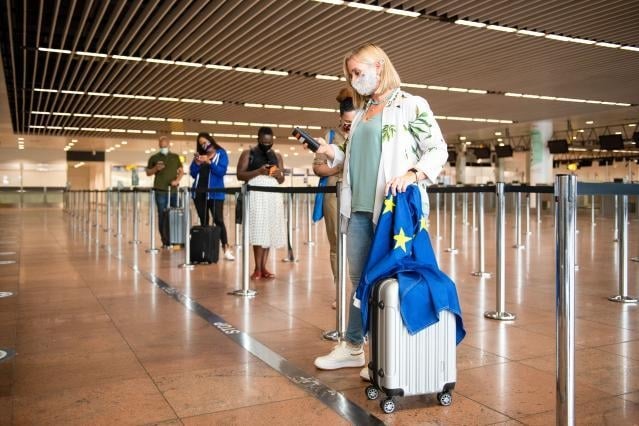
Today, March 17, the European Commission has introduced its plans for a Digital Green Certificate that will indicate whether a person has either been vaccinated against COVID-19, received a negative test result or recovered from COVID-19, and thereby exempt them from any travel restrictions imposed as a result of the pandemic.
Holders of the certificate “should be exempted from free movement restrictions in the same way as citizens from the visited Member State,” according to the EU statement.
The Digital Green Certificate will contain information including name, date of birth, date of issuance, relevant information about vaccine/ test/recovery and a unique identifier. The information cannot be retained by visited countries. For verification purposes, only the validity and authenticity of the certificate is checked by verifying who issued and signed it. All health data remains with the Member State that issued a Digital Green Certificate.
Each country’s health service will be responsible for issuing the certificates to its own citizens, but it might also be made available through test centres and hospitals.
Although designed to facilitate free movement inside the EU, the Digital Green Certificate will not be a pre-condition to free movement, in accordance with the rights of all EU citizens, regardless of their vaccination or test status.
“The certificate is an opportunity for Member States to adjust the existing restrictions on public health grounds. We would expect them to take this proof of people’s COVID-19 status into account to facilitate travel,” the statement outlined.
How will the certificate work?
| The Digital Green Certificate contains a QR code with a digital signature to protect it against falsification. | |
| When the certificate is checked, the QR code is scanned and the signature verified. | |
| Each issuing body (e.g. a hospital, a test centre, a health authority) has its own digital signature key. All of these are stored in a secure database in each country. | |
| The European Commission will build a gateway. Through this gateway, all certificate signatures can be verified across the EU. The personal data encoded in the certificate does not pass through the gateway, as this is not necessary to verify the digital signature. The Commission will also help Member States to develop a software that authorities can use to check the QR codes. |
The Digital Green Certificate proposal must now be approved by the European Parliament and be ratified by each member state; if it is approved then the EU will look to establish a digital infrastructure to facilitate the authentication of the Digital Green Certificates by summer, and each member state will have to make the necessary changes to their national health record systems. The Commission is working with the World Health Organization to ensure that certificates issued in the EU can be recognised elsewhere in the world as well. The Commission is also in contact with ICAO, the international organisation representing air travel.




